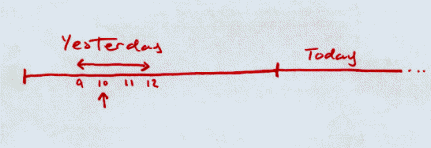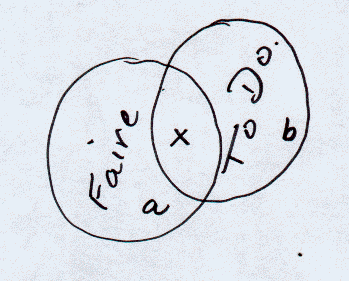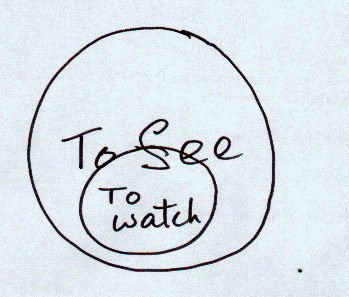TEACHING AIDS
The blackboard
This ubiquitous classroom aid has survived the computer age with relatively little modification. The only difference is that it is now, more often than not, a white board, the main advantage of which is that it has increased the sale of felt tip pens. The only real improvement in technology came with the advent of non-screech chalk. The rest is superficial.
When NOT to use it:
Language teachers are well advised to avoid the blackboard most of the time. If the teachers main aim is to get his students to speak, the blackboard is almost always counter-productive, an obstacle rather than an aid. At least when the teacher writes on it. Frequently a student asks " How do you spell ... " and the teacher turns to the blackboard. It is more effective to use this input to increase communication in the lesson. " Anybody know...? " may well get a volunteer to spell it aloud. If it doesn’t, the teacher can spell it aloud - and ask the student to spell it back to him. This is likely to bring out all kinds of problems with the alphabet which can be treated in an appropriate and more interesting context.
Its uses: Diagrams of ‘time’lines’ etc which can illustrate situations and enrich exercises.
The following, very complete, ‘time line’ diagram will allow a pretty efficient drill of many tenses: Simple past, Present perfect, Past perfect, simple future, Future perfect, in a context which makes their different meanings mathematically clear.
The diagram may appear complex if drawn in one go, but that isn’t the best way to do it anyway, if it is done in stages the students can be kept involved as you go along

Start off with the base line and the two verticals indicating ‘LAST YEAR’ and draw in a figure. Give the information to the students: " Wimpey built 10,000 houses last year. " Get the student(s) to repeat this, ask the corresponding question as you draw in the vertical for ‘NOW’ and the end of this year.
Write 3,000 in the appropriate slot and prompt ‘And so far this year?’.
This should elicit a response, either a figure, if you have written it in, or a question if you haven’t. As you continue to add information, if you are working with a group it is easy to get the students to ask each other questions, just by pointing to a figure, and to elicit answers with very little verbal intervention at all on the part of the teacher.
The drill can be extended, or used on different occasions to cover other moods, the passive, for instance:
" Wimpey built a lot of houses last year, 10,000 were built in the south of England ... "
Emphasise the " were built " and a highly effective drill of the passive is quickly under way.
" Wimpey doesn’t decorate the houses it builds Another company does that, Wimpey has them decorated. Lat year it had 10,000 houses decorated... ". This leads in, in just the same way, to a drill of the causative.
And of course it is easy to ring the changes with the verbs and to create another situation: " Last year the Forestry commission planted 10,000 trees ... " etc.
Diagrams can also clarify certain aspects of language, particularly relating to time and tense usage. The progressive forms are easy to drill, but often the concept itself is less clear. The following simple diagram, accompanied by the appropriate questions, can clear it up.

" Yesterday morning I worked for three hours. At 10h00 I was working. "
As you can see you don't need to be an artist to use this kind of diagram which can be done on a black/whiteboard or on a scrap of paper.
Certain misconceptions can be visualised by diagrams too. The student who insists on finding a translation for everything can be shown the following:
The French verb’FAIRE’ isn’t always the same as ‘TO DO ’ in English. There is quite a lot of overlap but they are not the same.

The ‘x’ corresponds to uses where they correspond, ie ‘to do homework’
There are obviously many more uses where the two do not correspond:
a could be "Faire une bÍtise."
b could be "That'll do!"
This sort of diagram can also be used to answer efficiently questions like " Is ‘To Watch’ the same as ‘To See’?

indicating that things you see are not necessarily watched, but things watched are certainly seen.
The danger of the blackboard is that it can become a distraction, especially if the students are reduced to watching the teacher write on it. In all the above instances the time taken to do the diagram is minimal and does not interrupt the flow of the lesson. With this sort of diagram the teacher can maintain a dialogue with his students at the same time as he is creating his illustrative material.